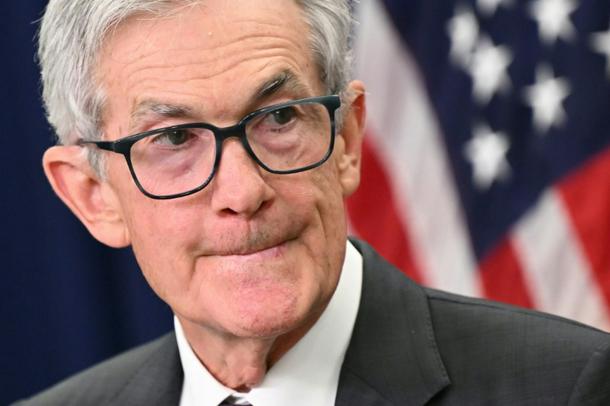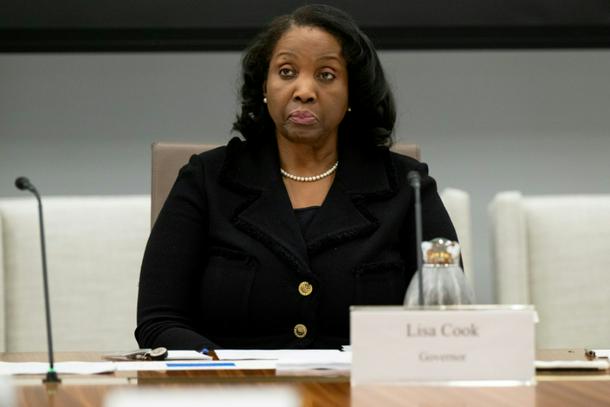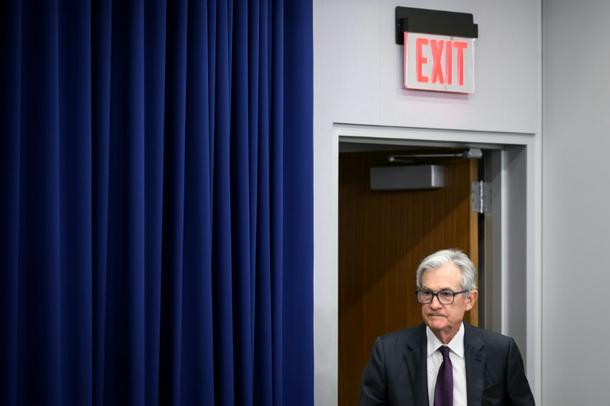
US Federal Reserve chief Jerome Powell has come under attacked from Trump, who has called him a "numbskull" for not lowering interest rates
Washington (AFP) - US Federal Reserve chief Jerome Powell is expected to walk a fine line while delivering a closely watched speech at a central banking conference on Friday, as he faces down attacks from President Donald Trump alongside mixed economic data.
The US central bank chair may have used his keynote speech at the Jackson Hole Economic Policy Symposium last year to indicate the time had come for interest rate cuts – but analysts warn there is a murkier picture this time around.
“The Fed is in a tough position as inflation remains above target and downside risks to the labor market are intensifying,” said Ryan Sweet, chief US economist at Oxford Economics.
Powell is due to deliver his final Jackson Hole speech as Fed chair at 10:00 am Eastern Time (1400 GMT) on Friday. His term at the helm ends in May 2026.
“Whether they cut or not in September will likely hinge on data that Powell won’t have in hand” at the symposium, Sweet told AFP.
Yet, the independent Fed has come under intensifying pressure from the Trump administration this year to lower rates.
- ‘No intention of being bullied’ -
Trump has made no secret of his disdain for Powell, repeatedly saying that the Fed chair has been “too late” in lowering interest rates while calling him a “numbskull” and “moron.”

Fed governor Lisa Cook has pushed back at Trump's calls for her resignation, saying she has "no intention of being bullied to step down"
The president has also taken aim at Powell over the Fed’s headquarters renovation in Washington, suggesting that cost overruns could be cause for ousting the central banker.
Trump eventually backed off the idea but this week separately called for the resignation of a Fed governor, Lisa Cook, over claims of mortgage fraud.
Cook pushed back, saying in a statement that she had “no intention of being bullied to step down” while adding that she would take questions about her financial history seriously.
- Jobs, inflation risks -
“We expect Powell to comment on both the latest jobs data and the latest inflation data before putting into context an assessment of appropriate monetary policy,” HSBC US economist Ryan Wang said in a note.
The Fed, which holds its next policy meeting in mid-September, has kept interest rates steady at a range of between 4.25 percent and 4.50 percent since its last reduction in December.
In keeping rates unchanged, policymakers cited resilience in the labor market as they monitored the effects of Trump’s wide-ranging tariffs on the world’s biggest economy.
Higher tariffs on imports risk fueling price hikes, according to analysts. The Fed typically keeps interest rates at a higher level to sustainably rein in inflation.
The Fed’s preferred inflation gauge rose 2.6 percent in June from a year ago, and a measure stripping out the volatile food and energy segments was higher at 2.8 percent. Both figures are above the Fed’s longer-term target of two percent.
But cracks have meanwhile emerged in the jobs market, which could call for lower rates to boost the economy.

US Federal Reserve Chair Jerome Powell is in a tough position when it comes to balancing risks to inflation and the labor market, analysts say
Official employment data released this month showed that hiring in May and June was much weaker than originally estimated.
Hours after the data was released, Trump ordered the firing of the commissioner of labor statistics, eventually picking an economist from a right-wing think tank as her replacement.
Softening employment has raised concern among officials, with Fed governors Christopher Waller and Michelle Bowman voting against the overall decision in July to hold rates steady for a fifth straight meeting.
Both had preferred to lower interest rates by 25 basis points. It was the first time since 1993 that two Fed governors dissented.
According to minutes of the meeting released Wednesday, Bowman argued that gradually reducing rates would help hedge against further cooling in the economy and the risk of damage to the labor market.
Fed officials remain divided on whether Trump’s tariffs would have a one-off effect on inflation or cause more persistent effects.
For now, CME Group’s FedWatch Tool shows the market sees a 73.5-percent chance that the Fed will lower rates in September.
“With more employment data to come, we don’t think Powell can firmly guide toward easing at the next meeting,” JPMorgan analysts said in a recent note.